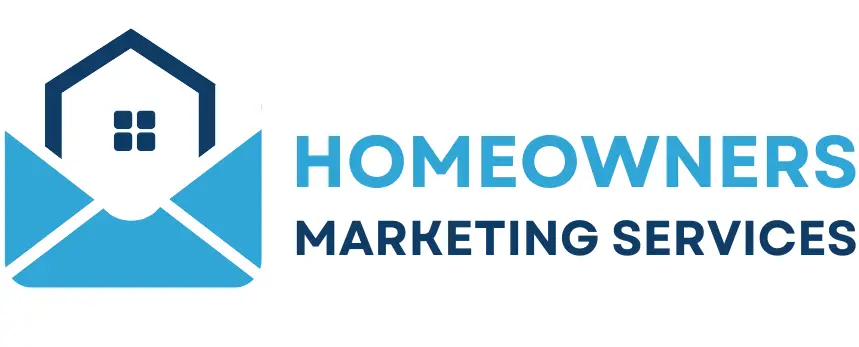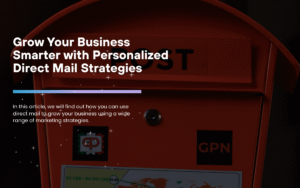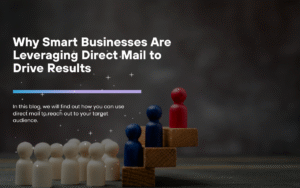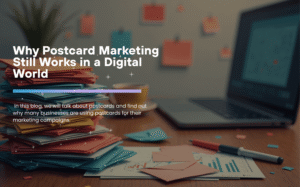Using Direct Mail and Data-Driven Lists for Smarter Campaigns
Planning a marketing campaign without knowing or mapping a clear target is very much like sending a mail piece without a recipient’s mail address; it’s bound to miss its destination. As such, It’s crucial to identify whom your primary target audience is in order to be able to build a successful strategy involving the use of a direct marketing mailing list.
In the current landscape, businesses are facing a myriad of choices in terms of where, when and how to market. But in order to succeed your business needs to ascertain the fundamentals: who are you selling to, and how do you reach them effectively?
Be it that you’re a startup or an established brand, we will help you navigate the way to finding your primary target market and reaching them via tools like direct mail and targeted data so that you can gain success.
1. What is a Primary Target Audience?
Firstly, let’s understand what primary target audience is. It comprises of a certain group of consumers or businesses who are likely to buy your service or products. They will do so when your offerings align with their needs, and as such, they are the best possible group to market to.
The following elements define this group:
- Geographics (audience location)
- Demographics (age, gender, income, education)
- Psychographics (values, lifestyle, pain points)
- Firmographics for B2B (company size, industry, revenue, decision-maker role)
- Behaviors (buying habits, brand loyalty, media consumption)
It is important to understand your target audience well, in order to be able to craft messages that speak to them and thereafter choose the best channels to reach them.
2. Start with Data: Dig Into Your Customer base
One of the easiest and quickest ways to define your primary target market is conducting an analysis of your existing customers.
Start by asking yourself the following questions:
- Who are your top buyers?
- What do they have in common?
- Where are they located?
- What challenges do they face that your product or service solves?
You can use CRM data, customer surveys, data analytics and purchase history for identifying patterns. This kind of information helps to form the foundation of your audience profile.
3. Segment and Prioritize
All customers are not the same, so in order to identify who the most valuable ones, you need to segregate them into various segments.
For example, if you sell HR software, then your audience base may include both small startups and mid-size enterprises; however, among them, some will be converting faster, or spending more, etc. These very groups will be considered your primary target audience.
Here are the categories to be used as segmentation criteria:
- Revenue potential
- Purchase frequency
- Lifetime value
- Responsiveness to past campaigns
Your goal should be prioritizing the group that will drive the highest ROI and build a marketing strategy that is centered around them.
4. Use a Targeted Direct Marketing Mailing List
Now that you have identified your ideal audience, the time has come to reach out to them, and direct mail is one such way and one which is powerful and effective.
When you have a high-quality direct marketing mailing list, that lets you:
- Pinpoint prospects based on specific attributes
- Reach only the people who match your ideal profile
- Avoid wasting budget on unqualified leads
Whether your target group is homeowners of a certain income bracket or businesses that are within a specific industry, with the help of mailing list providers, you are empowered to successfully zero in on the right audience.
Tip: It is suggested that you try looking for lists that offer flexible segmentation, based on parameters such as geography, SIC code, company size, or executive titles.
5. Craft Messaging That Speaks to Your Audience
Once you have ascertained to whom you are speaking, the next thing that comes up is making the message reflective of that. Your focus should be on how your solutions will help in solving the issues and problems of your audience.
For example:
- If the audience is made of busy executives with little time to spare, focus on ease and efficiency.
- In case your target is environmentally conscious consumers, we suggest highlighting the efforts for sustainability that you are taking.
It is very important to analyze and understand the pain points, goals, and values of your audience so that the message or services you market to them feels more personalized, as based on survey 36% of consumers believe that brands should offer more personalized experience and about 80% of consumers will only shop from brands that offer personalized experiences. So even in terms of mass communication, like direct mail, personalization becomes necessary.
Pro tip: You can use certain elements for personalization, like the name of the person or the company, when the purpose of using a direct marketing mailing list is increasing engagement.
6. Leverage Multi-Channel Reinforcement
Direct mail is a strategic and impactful channel, and by pairing it with digital channels, you can further improve the results of your campaigns. You can try and combine the efforts with:
- Direct Mail pieces with personalized landing pages (PURLs)
- Email follow-ups to reinforce the message
- Retargeting ads for those who visit your site after receiving the mail
By means of this holistic approach, you can make sure that your primary target market remains engaged across multiple touchpoints, further helping to improve the recall and response rates.
7. Track, Test, and Optimize
After you have marketed to your primary target audience, your work isn’t done yet; you need to do more. It is essential that you monitor the performance of your campaign from time to time, this helps you to analyze the effects of your work and understand what to do further. You can track metrics like:
- Response rates
- Conversion rates
- ROI by segment
- Engagement by offer type
Use A/B testing to check for speaks more-test different offers, headlines, mailing formats, and designs. There are different methods to analyze and are successfully used by businesses: 52% prefer checking individual consumer activities, 48% prefer personalized URLs, while another 45% rely on QR codes.
By refining and updating the direct marketing mailing list you highly improve the chances of reaching the most relevant prospects. If you choose the right mailing list provider, a good provider will do all that for you.
8. Revisit Your Audience Over Time
Your business is continuing to evolve with each passing day and so does your audience. Based on newer products, pricing outlines and market trends, there will be a shift in the segments and thus a change in the consumers or businesses who are likely your best prospects.
Make sure to revisit and check who your primary target audience are with high frequency. Make sure to use this new consumer data, sales feedback, and industry shifts to improve and refine your understanding of the audience and marketing plans.
Conclusion: Precision Wins in Direct Marketing
It is very important and essential to identify your primary target market for effective marketing, that allows you to deliver to them the right messages at the correct time and convert their intents to transactions.
Through data-driven and high-quality direct marketing mailing lists, you move ahead in the race and deliver messages that trigger your audience and ultimately lead to conversions.
Be it postcards, letters, or a complete campaigning kit, through direct mail, you get proven measure enabling you to stand ahead of the crowd, most importantly when you know to whom you are speaking to exactly.
Ready to Reach the Right Audience?
Work with a trusted data partner like Homeowners Marketing Services to build your perfect direct marketing mailing list, tailored to your most profitable prospects. Because the right message, to the right person, at the right time—that’s where the magic happens.






